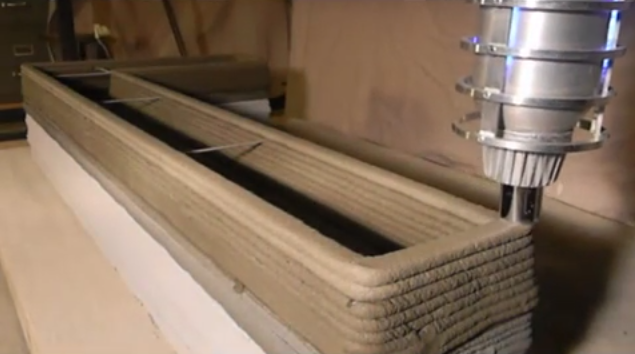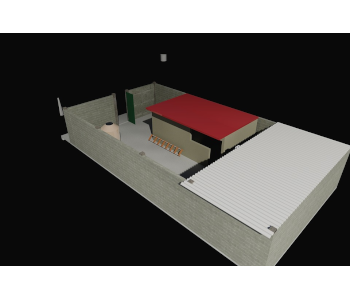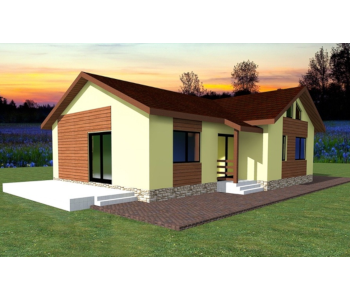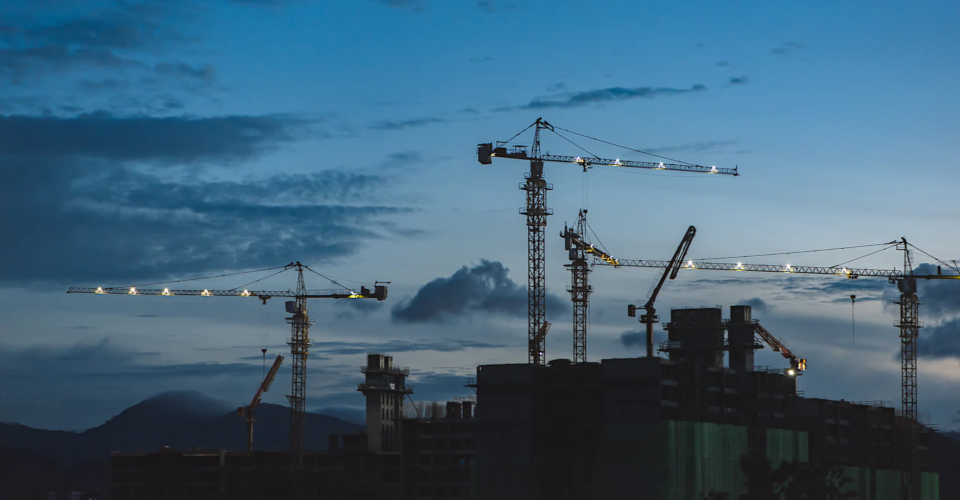Applications of 3D Printing in the Construction Industry
3D printing has already proven to be a disruptive force in the manufacturing industry, but is it possible for its influence to extend to other industries as well? After all, the very principle of 3D printing is a novel way of delivering and building materials that are commonly used in standard manufacturing.
Through the years, there have been several attempts to make use of 3D printing technology for construction. These efforts ranged from 3D printing building components to constructing an entire house using giant 3D printers. What is the potential of this technology and how does 3D printing benefit the construction industry?
A history of 3D printing used in construction

Early efforts to integrate 3D printing concepts with construction started in the mid-1990s. It was around this time that the University of Southern California developed the Contour Crafting building technology. This technique made use of ceramic extrusion through a computer-controlled crane to overcome the size limits of 3D printing technologies that were available at that time.
By the 2000s, a good number of companies have started to show interest in developing 3D printing techniques for construction. Diversification of the technology also started during this decade. In 2005, Enrico Dini from Italy patented the D-shape 3D printer which spreads a layer of fine sand and a binding agent, similar to how Jet Fusion 3D printing works.
In 2008, a research team from Loughborough University in the UK developed one of the first few 3D printing techniques that used concrete as a building material. With computer control, the process uses a gantry and robotic arm to lay down successive layers of concrete based on a CAD model. By 2015, Loughborough University has signed a deal with Skanska to start development of a commercial-scale concrete 3D printer.
The concept of 3D printing seems to have taken off in the last ten years with projects as ambitious as 3D printing an entire skyscraper in Dubai. We have also seen demonstrations of actual houses being built via 3D printing. The 3D Print Canal House in Amsterdam has the distinction of being the first 3D printed house and was created using the Kamermaker, which was a Fused Deposition Modeling (FDM) that is about six meters tall.
In Spain, a company called 3DBRIDGE created the first 3D printed pedestrian bridge. The bridge measures 12 meters by 1.75 meters and was created by a D-Shape printer using micro-reinforced concrete. The design freedom afforded by 3D printing made it possible for the materials to be distributed in a manner that maximized structural performance.
Demonstration projects for the use of 3D printing have popped up in several places across the world including China, Netherlands, and Dubai. In 2018, the first 3D printed permanent building was created in Copenhagen. It was the first of its kind because it was constructed with all permits in place and with the full approval of the authorities. As of the last update, the building still stands and remains fully furnished and usable.
Benefits of 3D printing in construction
Even when used in construction, the benefits of 3D printing are the same ones that have made the technology a powerfully disruptive tool in manufacturing. As an alternative to traditional construction methods, it’s easy to be excited about the possibilities of large-scale construction-grade 3D printing.
1. Design freedom

The construction industry is no stranger to Computer-Aided Design (CAD). The only difference is that the entire process can be automated in 3D printing, while each component has to be manufactured in traditional construction.
The beauty of relying on additive manufacturing technologies like 3D printing is that it makes complex designs with intricate geometries possible to reproduce. 3D printers are well-known for their ability to create designs that are far from typical. We can imagine a lot of architects and engineers getting excited over the prospect of unusual shapes and forms that a 3D-printed building or house can take
2. Economical for one-off pieces
Unlike traditional manufacturing methods that relied on heavy-duty and intricately designed molds and casts, the economics of 3D printing remains similar whether a firm is recreating single or multiple copies of the same design. This is a huge benefit for home designers who want to have parts that are more innovative than standard.
3. Fast
Back in 2006, Contour Crafting had already been making claims that their 3D printing technology can complete an entire house in less than a day, or approximately 20 hours. Chinese company Winsun seemed to have demonstrated this with ten demonstration houses, each of which they claimed to have been printed for less than $5000 and within 24 hours. These claims were heavily contested, though, and there have been no assertions made about its truthfulness.
The most concrete demonstration of the rate of 3D printing an actual room was made by Singapore’s HDB Centre of Building Research. Using a concrete 3D printing machine, they were able to create a room that measured 3.6 meters long by 3 meters wide and 2.75 meters tall in about 13 hours.
The Ynhova project in France built a fully functional house within a much more conservative time-frame – 54 hours. A family has already moved into the house, which costs approximately 20% cheaper than a traditional house.
No matter which firm made the claim, there seems to be an obsession with being able to build entire houses in less than 24 hours. This arbitrary limit sounds like a worthwhile target which will certainly pique the interest of the general public for 3D printing in construction.
4. Less waste generated

Unlike traditional construction, the materials that will be used in a 3D printed house can be easily determined based on the CAD model. Whether through an FDM-based technique or one more similar to Jet Fusion, it is also possible to use only exactly the amount of material needed to build a house. The minimal waste also drives down the cost of 3D printing a house, although the novelty of the technology may mean that it will take a while before it can be truly “inexpensive.”
5. Less risk to workers
In most cases, the whole process of 3D printing a house is fully automated. As long as the gantry has been put in place and that there is enough raw material supply, there is little need for human intervention. This means that workers no longer need to carry heavy loads or scale to hazardous heights. Ultimately, a 3D printing technique will require fewer human workers and will expose them to fewer hazards.
Until 3D printing for construction actually becomes a standard procedure, we can’t really say for sure if these benefits will manifest. The 24-hour promise may prove to be unrealistic, or the economics of 3D printing a house may come a little closer to the costs of a traditional house. All things considered, everyone should temper their expectations about the practicality of 3D printing a house, as it seems that the technology is still in the early stages of development.
3D printing houses in space?
The idea of using 3D printing technology to create habitats fit for humans in the Moon or Mars has been explored since 2013. The earliest proposed techniques made use of lunar material for construction, making it possible for spacecraft to be carrying only 10% of the mass needed to construct the habitats. The printed lunar soil will provide structural support, as well as protection from radiation and extreme temperatures.
Tests of this technique have been done using the D-Shape printer in environments that simulate the conditions on the lunar surface. The binding agent is injected into lunar sand and gets trapped into the interstitial faces via capillary forces. Aside from habitats, 3D printing as a method to build roads, storage tanks, landing pads, and hangars have also been explored.
More recently, NASA has considered the idea of using microwave energy to achieve sintering of lunar dust. This technique melts the individual dust particles, but only to the point where their surfaces fuse with each other. This is a somewhat low-energy alternative that does not require the use of a binding agent. However, sintered structures may lack strength and may have uncontrolled porosity.
What can hold back the use of 3D printing in construction
For many industry insiders, 3D printing as a construction technique is held back by the same drawbacks that have limited the use of panelized construction. Although pre-built construction panels made the whole process of building a house faster and cheaper, the resulting houses ended up looking unappealing and monotonous. There were also problems with reinforcement, waterproofing, condensation, and insulation.
Before 3D printing can even have a chance to challenge more traditional construction methods, it will have to address these criticisms. After all, nobody will want to live in a novelty house if it’s uncomfortable and especially if it breaks down too easily. It also requires the use of complex equipment that may not be available everywhere or to everyone.
Final thoughts
The construction industry presents a unique opportunity for 3D printing technology to “scale up” beyond the usual workshops or manufacturing floors. Across different countries, there seems to be a race for who can use 3D printing to build a house in the most practical, reliable, or cheapest way. So far, we’ve seen quite a few demonstrations of a seemingly good concept.
It’s pretty clear that 3D printing for construction still has a long way to go before it can be used at a level that is acceptable to many people. The good news is that there are a lot of world-class firms that are heavily invested in the technology, including NASA. With so many brains on it, it’s only a matter of time before we see 3D printed houses become more common.


